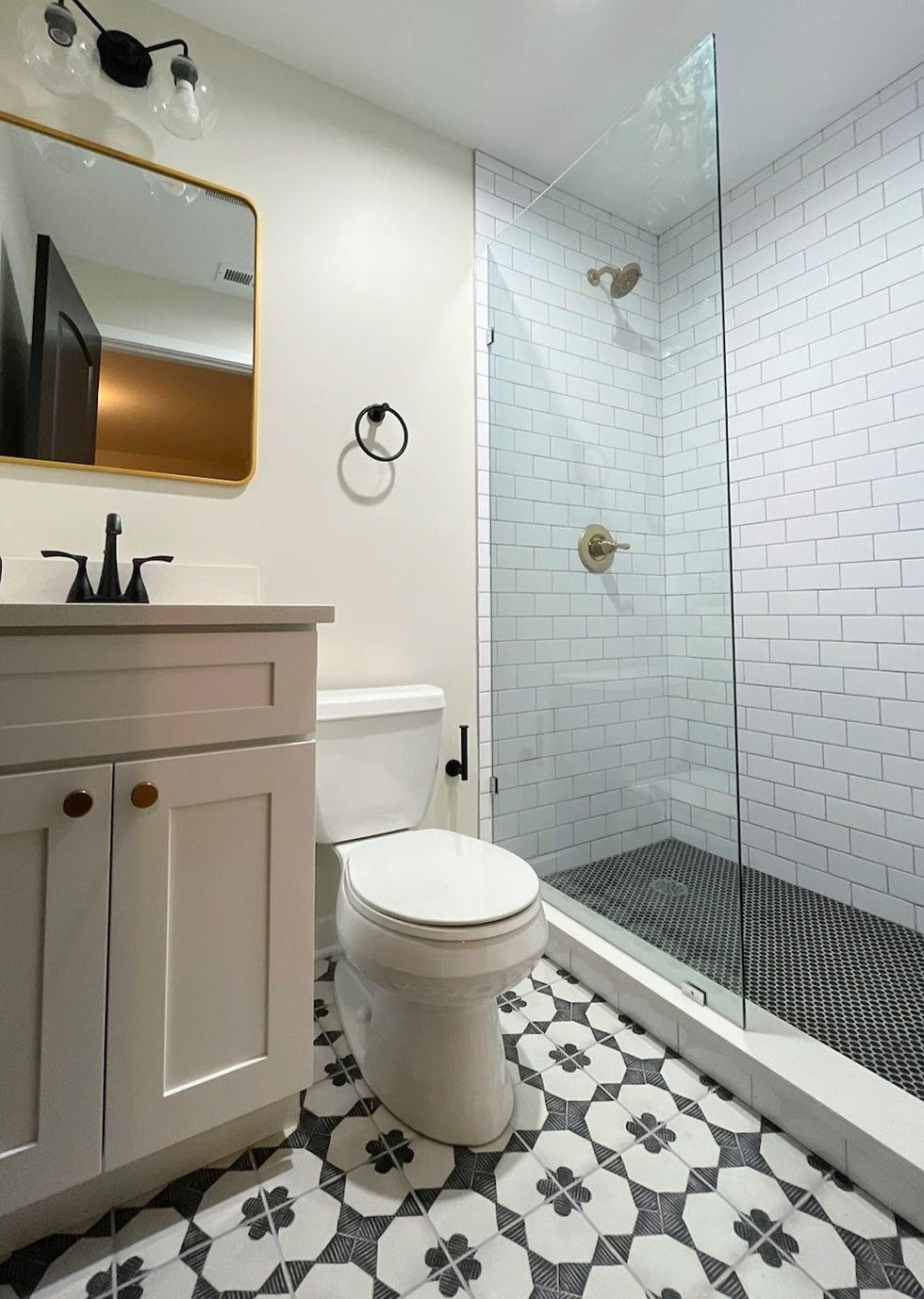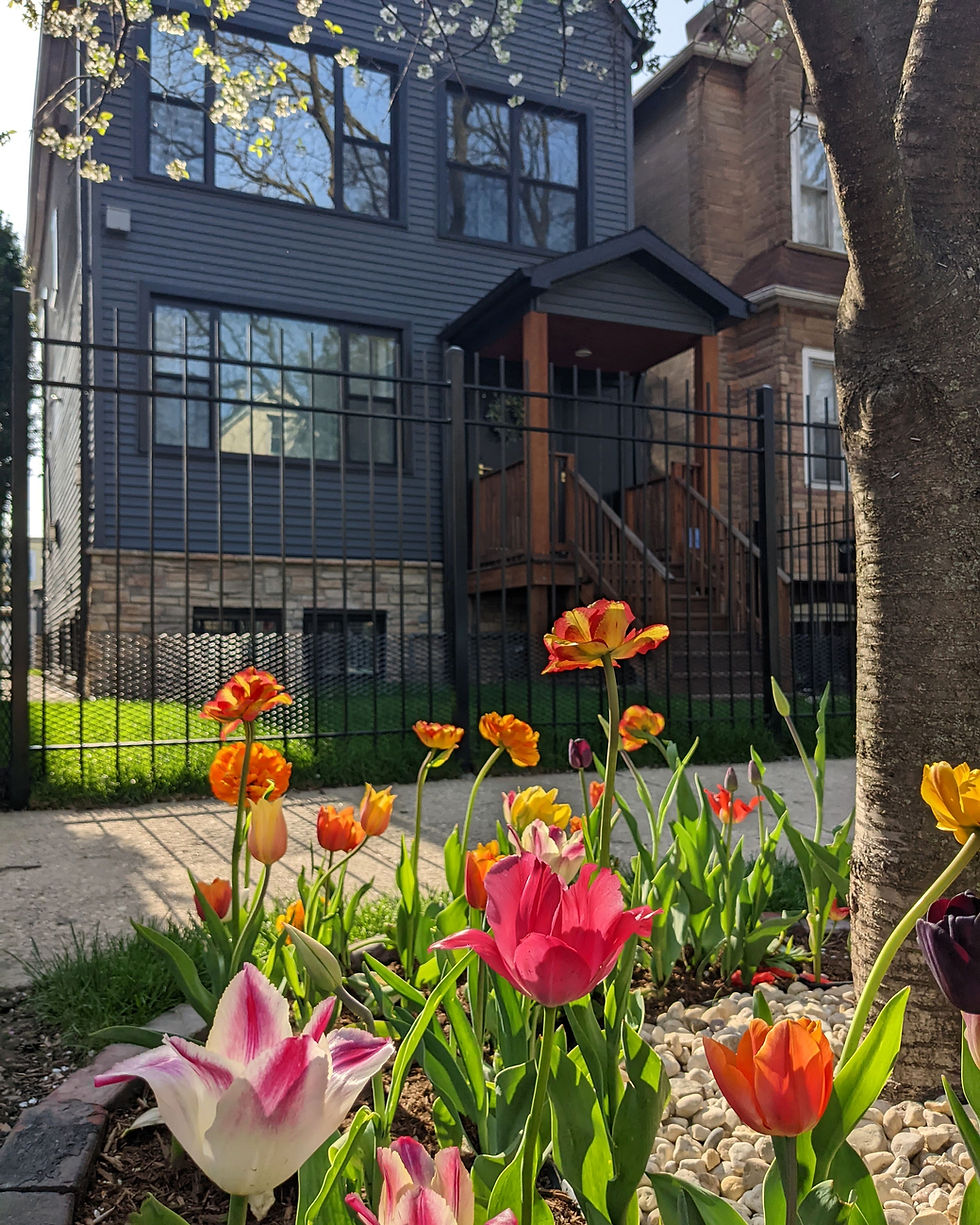TIPS FOR REHABBING A RENTAL PROPERTY
- Lauren Hundman
- May 30, 2023
- 6 min read
Updated: Jun 1, 2023

I don’t recommend renovating a rental unit with the same finishes you would use in your home. Tenants can be tough on a property. They often don’t treat the property with the same care and respect as a homeowner. Renters may not know how to properly care for a home, or care less because they don’t own the property. Rental units tend to look more beat up quicker than your own home.
After ten years of running a property management company, I have seen many of the most common maintenance calls and know there are techniques for preventing some of them. Maintenance issues cost money, even an easy fix such as replacing a broken blind will have a labor charge and a trip charge from whoever does the work. Renovate the property to prevent as much maintenance as possible.
Below I have outlined tips on how to rehab an apartment while:
1. Increasing the longevity of finishes
2. Preventing common maintenance calls.
Jump Ahead to a Section Below:
Flooring
Hardwood flooring
Hardwood flooring has some advantages as a flooring choice in rental units. It is a relatively strong material, but it can also be sanded down and refinished many times, prolonging its life. If you install hardwood floors in a rental property, I recommend only using a clear stain, not a colored stain. Using a clear stain makes it easier to touch up small sections of the floor when there is damage. Never use a mix of more than one stain. It is almost impossible to match mixed stains again when you need to repair some areas.

Carpet
Avoid installing carpet in rental properties. Carpet holds smells and stains easily. You may have to pay to have it professionally steam cleaned between tenants. You will also have to replace the carpet more often than other flooring types. With these costs and headaches, it’s worth investing in hardwood or a luxury vinyl plank instead.
Basement flooring
Popular flooring choices in basements include: carpet, vinyl planks, and tile. I recommend installing actual porcelain tile. (Note that porcelain tiles are harder and less likely to break than ceramic tiles). It is always best to assume the basement will have water or moisture in it at some point. It could have water from a backed-up ejector pump, a failing sump pump, water from the city backing up in the drains, a leaking hot water heater, a blocked exterior drain, etc. No matter how hard you try to prevent all of those scenarios, there is still a decent chance there will be water one day.

Carpet is the worst floor covering choice for handling any water. If there are ever any water issues, the carpet will likely have to be thrown out and replaced. Some higher-end vinyl floor planks can tolerate water (and many advertise this). In dealing with basement floods, I have seen vinyl floor planks warp, separate, and have the finish come off, so not all of them are waterproof. A good quality porcelain tile can hold up to water best. I go even further and use the same porcelain tile as the baseboard in the basement. If there is ever water, the tile baseboard helps to prevent moisture from ruining wood baseboards. It also helps to prevent water from reaching the drywall, and it prevents mold. The tile floor plus tile baseboard also minimizes the work and time needed to clean up the basement after water. If you have to replace the floor, tear out baseboards, let the drywall dry, and then replace baseboards, this is a long time to displace a tenant.

Tile
For tiling floors, use porcelain tiles whenever possible. Ceramic tile is not as hard and is more likely to crack over time.
Avoid real marble tiles. Marble requires regular sealing, which is an added maintenance cost. Marble is a softer material that dents and scratches more easily than porcelain or ceramic tiles. Finally, marble will also stain easier. You are more likely to end up with yellow and pink discolored tiles.
Choose larger size tiles for both floor and walls. Larger tiles = less grout. Tenants often skip regular cleaning of showers, tubs, and bathroom floors. Grout often becomes discolored and gross looking due to the lack of cleaning. Less grout= fewer areas to become discolored.
When installing floor or wall tiles, do not use white grout. Use dark grout whenever possible. It is hard for a homeowner to keep white grout white, much less a tenant who may not clean as often. Dark grout is less likely to stain and become discolored over time.

Plumbing
Garbage Disposals
I don’t recommend installing garbage disposals in rental properties. Renters often don’t know how to use and care for them properly. Even if you teach them how to, the chances of it breaking from misuse within the first couple of years are high. Most renters also won’t decide whether or not to rent a place based on if there is a garbage disposal, so not having one usually won’t hurt rentability.
Ejector Pump Alarms
Ejector pumps are typically installed in basements with a bathroom. The pump works to push sewage up to the level of the city sewer line. If the pump becomes clogged, it will back up and leave sewage water in the basement. Ejector pumps can back up when they are old and stop working or from tenants putting anything down toilets besides toilet paper. I recommend buying an alarm and having it installed inside the ejector pit. The alarm will go off (or notify you via an app on your phone) when water levels in the pit get too high. A high water level is an indicator that the pump is going to back up. When the alarm goes off, you can tell the basement tenants to stop using any basement plumbing and call a plumber to repair the pump. This will prevent the backup from happening!
Low-Flow Plumbing Fixtures
Water prices continue to go higher every year. Typically in a multi-unit building, the owner is responsible for paying water bills, not the tenants. When renovating a rental unit, install low-flow faucets, toilets, and shower heads. These fixtures work similarly to regular fixtures but will keep water bills lower. They are good for the environment too!
Ice makers
I try to buy fridges without ice makers, or I won’t hook up ice makers to a water line (and I am always sure to advertise that there is no ice maker). Ice makers and ice maker water lines tend to have a lot of issues and break or leak easily. This is unrelated to tenant care and maintenance. I think they are often cheaply made and don’t last long. The labor and materials to replace them can be expensive, so I always preferred not to have them.
Kitchen faucets without a spray function
If you can find them, I recommend installing kitchen faucets that don't have a pull down or sprayer function. The pull down spray function will be the first thing to break on the faucet and tenants tend to be rough when using them as well.
Jacuzzi tubs and steam showers
These two items also tend to have more maintenance issues. The motor will stop working and need repairs or replacement, etc. They are unrelated to tenant maintenance, they are just items that tend to cause more headaches than they are worth. I don’t recommend installing a jacuzzi tub or a steam shower in a rental property.
Paint
Common paint choices in rental properties have a few different advantages and disadvantages.
Flat paint. Flat paint is a popular choice for rental units because it is typically the cheapest option. Many painters also argue it is the easiest paint for doing touch-ups because differences won’t show in the touch-up area as much as other paint finishes.
Semi-gloss or satin paint. I prefer using a semi-gloss or satin paint finish. These options are more expensive, but you can wash a lot of scuffs and marks off them without having to repaint. These paint types also hold up to moisture in bathrooms better.
Keep a note of the paint colors you used, the type of paint as well as the brand. This information will make it easier to do paint touch-ups during tenant turnovers.
Blinds
Broken window blinds were one of our most common maintenance calls. This was true for inexpensive blinds and higher-end Hunter Douglas-type blinds. On the higher-end ones, remotes would stop working, the blinds would get stuck, and it’d be difficult to clean the fabric blinds between tenants. The cheap ones would break a lot, both the cords and the actual blinds. They also took a lot of labor to clean between tenants. You are not required to provide blinds to a tenant, but I also don’t recommend allowing tenants to install their own, instead, provide curtain rods. Curtain rods are relatively inexpensive, harder to break, and easier to clean. With curtain rods, tenants can purchase curtains, and take them with them when they move out. They can decide if they want something sheer, blackout, or in between. Again, most renters also won’t decide whether or not to rent a place based on if there are blinds, so not having them usually won’t hurt rentability.

Counters
Again avoid any real marble kitchen or bathroom counters. Marble requires regular sealing, which is an added maintenance cost. Marble is a softer material that dents and scratches more easily than porcelain or ceramic tiles. Finally, marble will also stain easier; you are more likely to end up with wine stains on counters, etc.



Comments